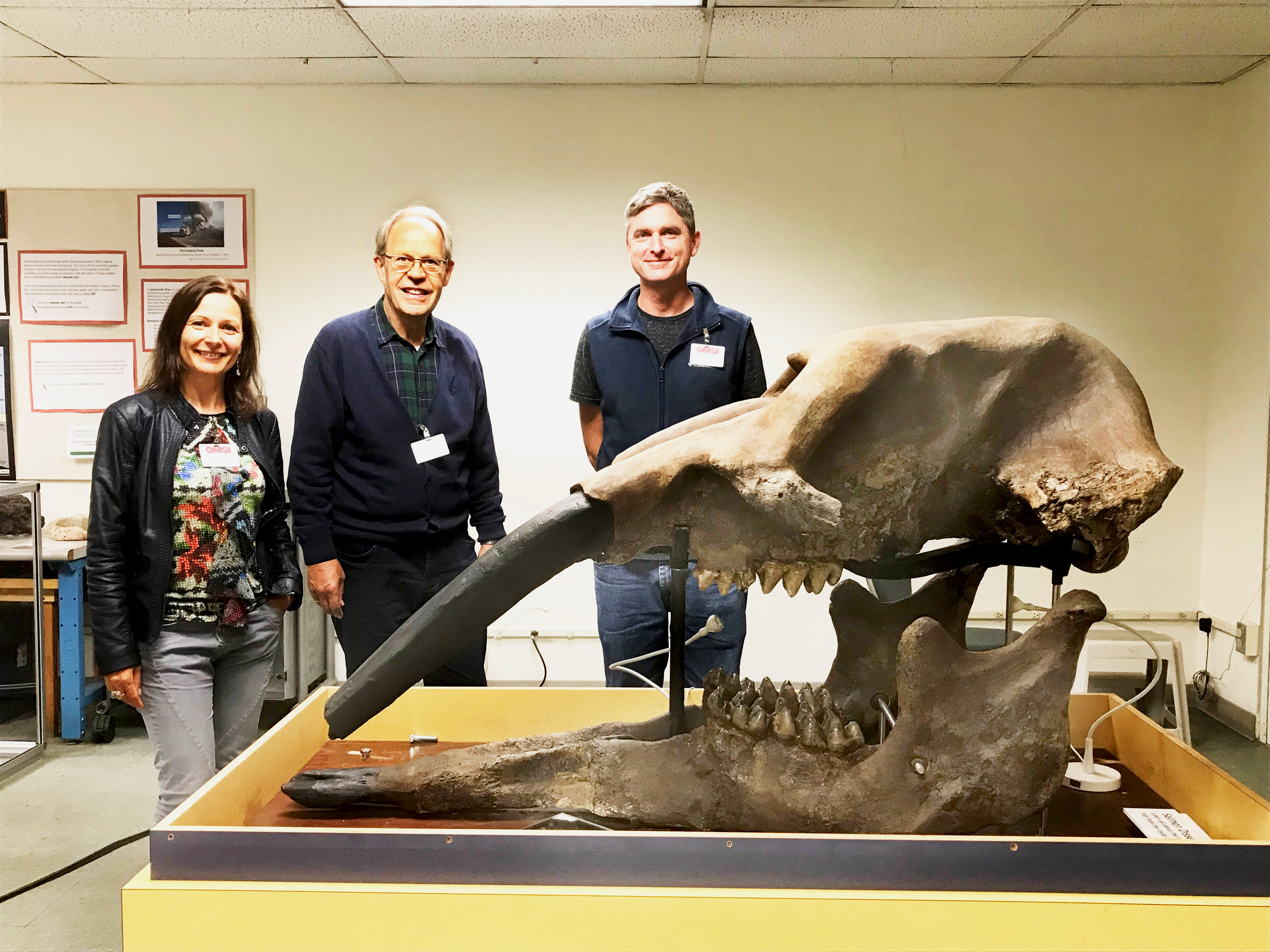New mammutids (Proboscidea) from the Clarendonian and Hemphillian of Oregon – a survey of Mio-Pliocene mammutids from North America
Keywords:
Mammutidae, Proboscidea, North America, Biostratigraphy, Miocene, Sex-linked morphological differenceAbstract
A survey of Miocene-Pliocene Mammutidae from North America is provided. Two important but undescribed specimens from Unity (Clarendonian) and Hermiston (Hemphillian) are reported, and a previously described mandible from Black Butte (Clarendonian) is revisited. The Unity specimen, a maxilla with a tusked longirostrine mandible, represents Zygolophodon proavus. Upper and lower tusks are well developed. Mammutid species are best characterized by traits of the mandible, the upper tusks and lower and upper dentitions. However, they are rarely preserved in a single individual, as in the Unity specimen. A second mammutid mandible from the nearby, stratigraphically similar Black Butte locality has a short, tuskless symphysis and was described as “Mammut (Pliomastodon) furlongi". We question the independence of this species, because both types of mandibles are coeval in several Eurasian localities. The widespread geographic and stratigraphic co-occurrence of different mandible types cannot be explained through a phylogenetic model alone. Therefore, we discuss whether these parallel mammutid occurrences can be interpreted as resulting from species diversity, intraspecific variability, pathological abnormities, or as a sex-linked morphological difference.
The Hermiston maxilla from the upper Hemphillian represents Mammut matthewi. The large upper tusk differs from Z. proavus. The morphology of the mandible, however, remains unknown, thus its precise evolutionary stage is uncertain. The maxillary molars of the Hermiston specimen are larger than in Z. proavus however, we observe a high degree of variability in the size of mammutid molars so this character alone is not indicative of a specific evolutionary stage.
The relatively small number of localities with informative specimens and the conservative dental morphology of mammutids throughout the Miocene and Pliocene obscures the potential occurrence of synchronous North American taxa. Our results favor the interpretation of a continuous and endemic evolution from Zygolophodon to Mammut and make an independent immigration of the genus Mammut from Eurasia less probable. Therefore, the genus name Mammut should be avoided for Eurasian mammutids.
Downloads
Published
Versions
- 2023-11-02 (2)
- 2023-09-29 (1)
How to Cite
Issue
Section
License
Authors who publish with this journal agree to the following terms:
Authors retain copyright and grant the journal right of first publication with the work simultaneously licensed under a Creative Commons Attribution License that allows others to share the work with an acknowledgement of the work's authorship and initial publication in this journal.
Authors are able to enter into separate, additional contractual arrangements for the non-exclusive distribution of the journal's published version of the work (e.g., post it to an institutional repository or publish it in a book), with an acknowledgement of its initial publication in this journal.
Authors are permitted and encouraged to post their work online (e.g., in institutional repositories or on their website) prior to and during the submission process, as it can lead to productive exchanges, as well as earlier and greater citation of published work (See The Effect of Open Access).

